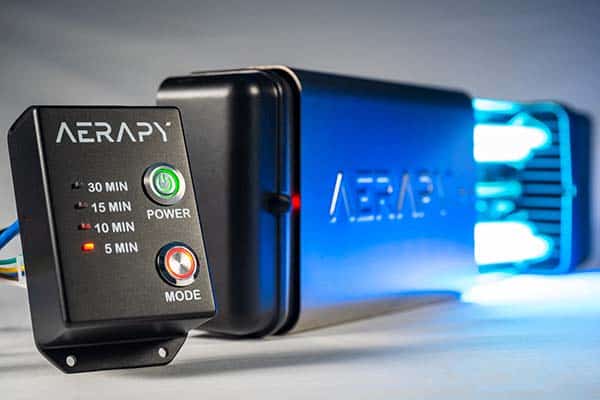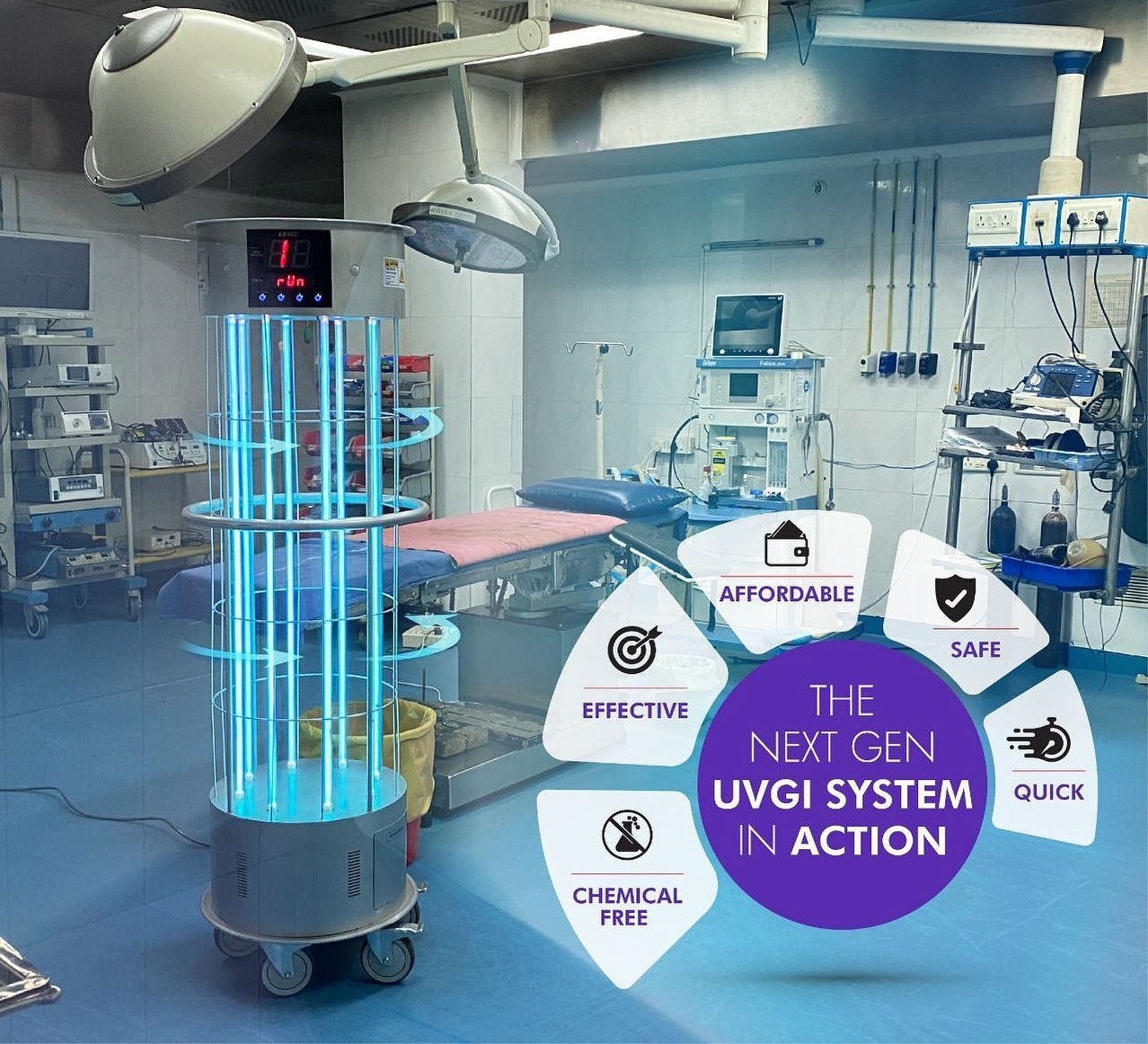Far UVC Light: A Game-Changer in the Fight Against Airborne Pathogens
In the ever-evolving battle against air-borne microorganisms, the development of far UVC light has stimulated substantial passion and capacity. This cutting-edge modern technology, using a certain variety of ultraviolet light, holds the pledge of changing how we combat the spread of dangerous microorganisms in different settings. Its one-of-a-kind properties and prospective applications have actually amassed interest from scientists, researchers, and public health experts alike. However just what is far UVC light, and exactly how does it function? In this discussion, we will delve right into the science behind this game-changing technology, explore its benefits, and examine its future ramifications in the ongoing fight against air-borne virus.
The Scientific Research Behind Far UVC Light
The clinical concepts underlying using Far UVC light as a prospective option for combating airborne pathogens are both elaborate and encouraging. Much UVC light describes a details variety of ultraviolet (UV) light wavelengths, generally between 207 and 222 nanometers, which have actually been found to properly eliminate or inactivate microorganisms such as infections and germs. Unlike conventional UVC light, which has a much shorter wavelength and is known for its germicidal residential or commercial properties yet can additionally damage human skin and eyes, Far UVC light has actually been revealed to be secure for human direct exposure.
The crucial device behind the effectiveness of Far UVC light hinge on its capability to pass through and damage the hereditary product of bacteria, including their DNA and RNA. When subjected to Far UVC light, the genetic product undergoes a procedure called photodimerization, where adjacent bases in the DNA or RNA particle bind together, protecting against replication and making the bacterium not able to duplicate or create infection.

How Far UVC Light Works
Far UVC light operates by utilizing certain ultraviolet wavelengths to properly neutralize microbes and prevent their duplication, making it an encouraging solution for combating airborne microorganisms. Unlike conventional UVC light, which is dangerous to human skin and eyes, much UVC light has much shorter wavelengths, normally in the variety of 207 to 222 nanometers (nm), that do not pass through the outer layer of the skin or the tear layer of the eye. This makes it risk-free for continual human direct exposure, while still being dangerous to microorganisms and viruses.
The effectiveness of much UVC light depend on its ability to pass through and destroy the DNA and RNA of bacteria. When subjected to much UVC light, the hereditary product of these virus is damaged, providing them incapable to duplicate and infect cells. In addition, studies have revealed that much UVC light can properly suspend airborne infections, such as flu, measles, and coronaviruses, including SARS-CoV-2, the infection responsible for COVID-19.
Furthermore, much UVC light is additionally with the ability of disinfecting surfaces and things in an enclosed area. By installing far UVC light components or using portable far UVC light tools, it is possible to continuously disinfect the air and surface areas, lowering the danger of air-borne transmission of pathogens.
Advantages of Far UVC Light
Making use of much UVC light deals an array of substantial benefits in combating airborne microorganisms and making certain a much safer setting for constant human exposure. One of the key advantages of much UVC light is its capability to efficiently neutralize numerous kinds of harmful microorganisms, viruses, and fungis without triggering harm to people. Unlike conventional UV light, which can be hazardous to human skin and eyes, much UVC light has a much shorter wavelength that enables it to target and damage microorganisms while posing marginal threat to human wellness.

In addition, much UVC light is much more secure for the setting contrasted to conventional disinfection approaches. Chemical disinfectants frequently include unsafe ingredients that can have unfavorable influence on the setting. Much UVC light, on the various other hand, does not produce any unsafe by-products or residues, making it an extra environment-friendly and lasting option.
Applications of Far UVC Light
Much UVC light has actually verified to be effective in eliminating air-borne virus such as bacteria, fungi, and viruses. Unlike standard UV light, far UVC light is safe for human direct exposure, making it ideal for constant use in public areas such as medical facilities, workplaces, and institutions.
Another application of much UVC light remains in the health care industry. It can be used to decontaminate hospital spaces, operating cinemas, and medical devices, reducing the risk of healthcare-associated infections. Additionally, much UVC light can be included right into HVAC systems to cleanse the air flowing in buildings, providing an added layer of security versus airborne microorganisms.
Additionally, far UVC light can be utilized in the food industry to avoid foodborne health problems. It can be utilized to sanitize food handling centers, eliminating germs and other bacteria that may pollute food.
Future Implications of Far UVC Light
The possible future applications of much UVC light are large and hold promise for different industries and fields. Among the essential locations where far UVC light can have moved here a significant influence is in health care setups. Medical read here facilities and centers can use much UVC light to decontaminate patient rooms, operating cinemas, and waiting locations, decreasing the threat of healthcare-associated infections - far-uvc. This could possibly lead to improved client results and decreased healthcare expenses.
In addition, using far UVC light in public spaces such as flight terminals, train terminals, and shopping center could help manage the spread of air-borne virus. By continuously disinfecting these locations, the risk of transmission can be dramatically lowered, giving a more secure setting for individuals.
Another prospective application of much UVC light is in the food market. Much UVC light could be used to decontaminate food preparation surfaces, packaging products, and storage areas. This might help avoid the contamination of food and minimize the incident of foodborne illnesses.
Additionally, far UVC light can be made use of in HVAC systems to sanitize the air circulating in buildings. his comment is here This might be particularly helpful in crowded spaces such as institutions, workplaces, and movie theaters, where the risk of air-borne transmission is greater.
Conclusion
In final thought, much UVC light has actually arised as a game-changer in the fight against airborne virus. From public rooms to medical care settings, far UVC light offers many advantages in minimizing the transmission of illness.
Far UVC light refers to a certain range of ultraviolet (UV) light wavelengths, commonly in between 207 and 222 nanometers, which have been found to successfully kill or inactivate microbes such as microorganisms and viruses. far-uvc. Unlike standard UVC light, which has a much shorter wavelength and is understood for its germicidal buildings yet can also damage human skin and eyes, Far UVC light has been shown to be safe for human exposure
Unlike conventional UVC light, which is hazardous to human skin and eyes, far UVC light has much shorter wavelengths, generally in the range of 207 to 222 nanometers (nm), that do not pass through the outer layer of the skin or the tear layer of the eye. Unlike traditional UV light, which can be hazardous to human skin and eyes, much UVC light has a shorter wavelength that permits it to target and damage pathogens while posturing marginal risk to human wellness.
Unlike standard UV light, far UVC light is secure for human exposure, making it appropriate for constant usage in public spaces such as offices, healthcare facilities, and institutions.